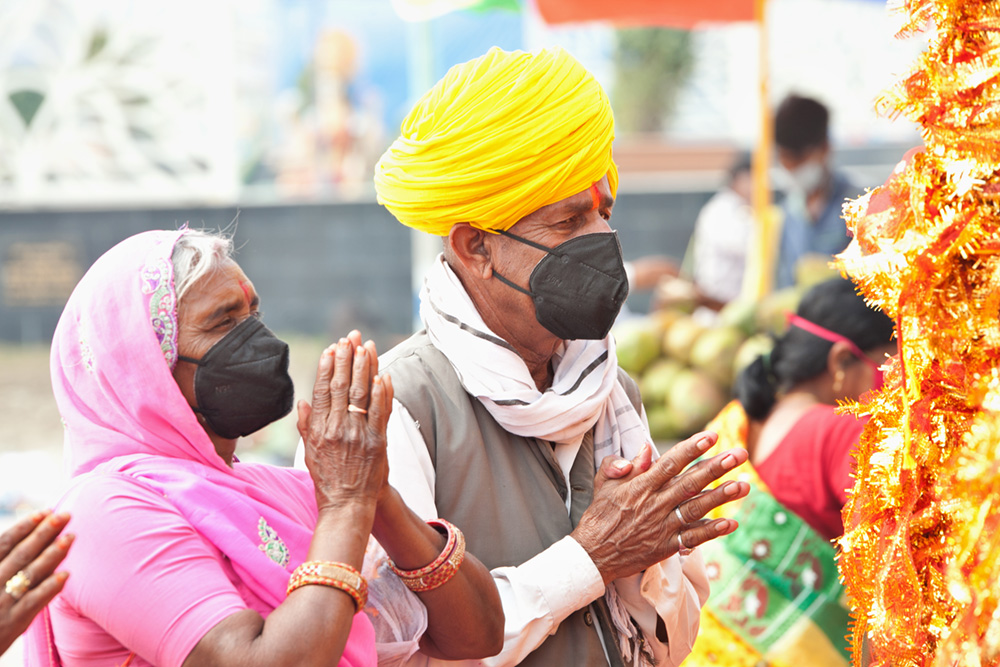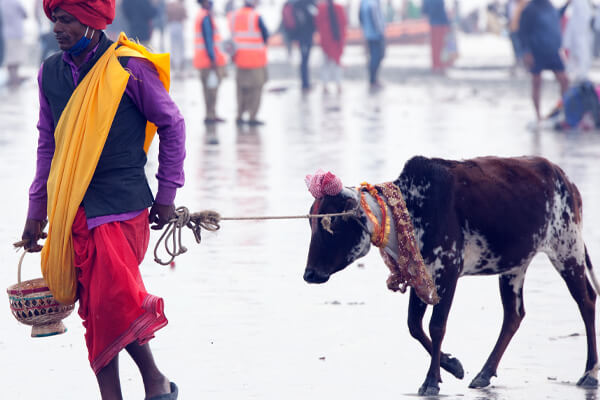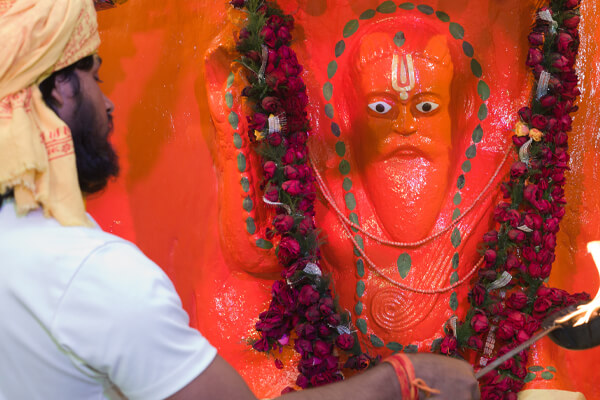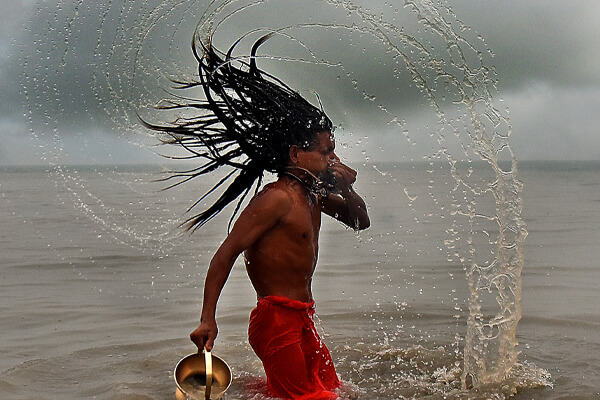
Celebrated on the eve of Makar Sankranti, the Gangasagar Mela is a celebration of ancient rituals that have been part of India’s decorated past. As Surya Dev (or the sun god) transits into Capricorn from Sagittarius, millions of pilgrims visit the shores of the Sagar Islands to take a dip at the holy confluence. It is believed that taking a dip in the right position washes away earthly sins and helps the devotees attain Moksha. The Sahi Snan is followed by a series of extravagant rituals that continue for three days.
One such practice is throwing a bundle of gems (Pancha-Ratna) and sacred thread into the creek of the river so that it ends up in the ocean. It is a gesture of sacrifice.
In the early hours of Makar Sankranti, devotees brave the icy waters in the quest for Nirvana. Some shave their heads, while others perform Shraddha for their departed parents. The bathing ritual continues until noon.
After that, they head towards the temple of Kapil Muni to perform puja and seek the blessing of the deity. In the evening, the fathomless depth of the ocean lights up with thousands of Diyas (earthen lamps), which elevates this timeless devotion to cosmic heights.

Baitarani Paar
In Garuda Puran, chapter 47 mentions the name of a mystical river, “Baitarani”. The river symbolizes material belongings of the mortal world that are difficult to part with. It is believed that the souls of the dead must cross the river, and those who have not been kind or come to the aid of others will fall into the river and perish in the abyss of eternity. However, the helpless soul will be able to cross the river while clinging to the tail of a cow. This ritual is still in practice, with people crowding throughout the day during Gangasagar mela with a wish to demolish the captivity of the mortal world.

Puja at Kapil Muni Temple
Kapil Muni Ashram is another reason why millions of pilgrims visit Gangasagar every year. They bathe with faith and head towards the temple of Kapil Muni to perform puja and seek the blessing of the deity. In the evening, the fathomless depth of the ocean lights up with thousands of Diyas, the hymn of pundits intervenes in the sweeping waves which elevate this timeless devotion to cosmic heights.

Punya Snan
Moksha is an undertone of liberation from rebirth that can be attained while one resides on earth. Some Indian traditions have emphasized liberation on ethical action within the world, an enigmatic transformation permitting one to confront the actuality of circumstances beyond the dusky cloud of ego and misery. This liberation of Moksha awakens among the souls of devotees through the divine snan on the auspicious Mahatithi of Makar Sankranti at Gangasagar. A sight hard to behold. Millions of devotees all-round the globe wait with bated breath just to dive into the elixir of the holy confluence. This belief in destroying worldly sins has penetrated Indian hearts for ages. Thus, Gangasagar became a living tradition wrapped around faith, devotion, and belief.


